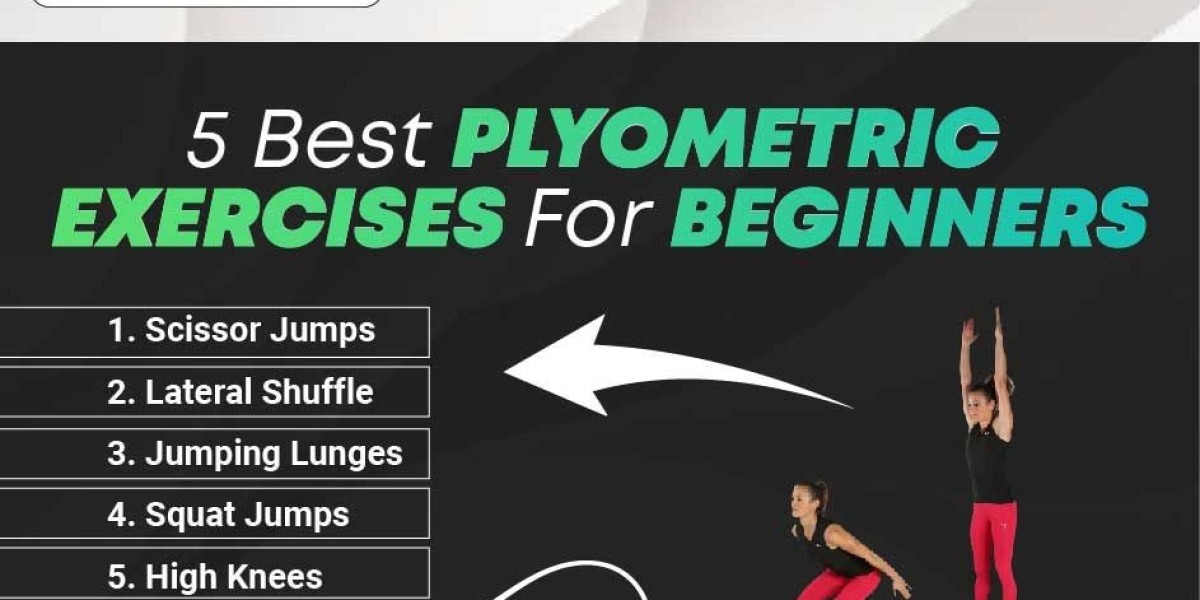What Are Plyometric Exercises?
Plyometrics, often referred to as "plyos," are exercises aimed at enhancing explosive muscle power. Originating in the 1960s-70s through Soviet sports science, these exercises—like rapid jumps—were developed to improve speed and power in athletes.
The foundation of plyometrics lies in the stretch-shortening cycle, which includes:
Eccentric Phase (Loading): Muscles stretch and store energy, like coiling a spring (e.g., bending knees before a jump).
Amortisation Phase: A brief transition where energy is held before release.
Concentric Phase (Explosion): Muscles contract powerfully, unleashing stored energy (e.g., the jump).
This cycle trains muscles to maximize force quickly, boosting athletic performance.
5 Easy Plyometric Exercises for Beginners
Ready to energize your routine? Here are five simple plyometric exercises that are perfect for beginners:
Scissor Jumps
Jump explosively, spreading legs to shoulder-width apart mid-air.
Swing your arms overhead while jumping.
Snap legs back together upon landing.
Target Muscles: Quads, hamstrings, glutes, calves, core.
Lateral Shuffle
Stand with feet apart and shuffle side to side explosively.
Keep your core engaged and maintain good posture.
Target Muscles: Adductors, glutes, core.
Jumping Lunges
Begin in a lunge position with both knees at 90-degree angles.
Jump explosively and switch legs mid-air.
Land softly and repeat.
Target Muscles: Quads, glutes, hamstrings, calves.
Squat Jumps
Start in a squat position with your feet shoulder-width apart.
Push through your heels to jump straight up explosively.
Land softly with knees slightly bent.
Target Muscles: Quads, glutes, hamstrings, calves.
High Knees
Run in place while driving your knees high toward your chest.
Land lightly on the balls of your feet and maintain core engagement.
Target Muscles: Quads, hamstrings, core.
7 Amazing Benefits of Plyometric Exercises
Improved Power and Explosiveness
Plyometrics train muscles for maximum force output, enhancing performance in sports and daily activities.Better Agility and Coordination
These exercises refine your ability to move swiftly and respond to changes in direction.Enhanced Muscle Strength
Plyometrics engage multiple muscle groups simultaneously, promoting overall strength.Increased Bone Density
The impact forces stimulate bone growth, which can help prevent injuries.Faster Reaction Time
Plyometric training sharpens the nervous system, resulting in quicker reflexes.Elevated Athletic Performance
Greater power, speed, and agility boost performance across various disciplines.Higher Calorie Burn
The intense, explosive movements elevate your heart rate, burning more calories during and after workouts.
The Final Takeaway
Incorporating these beginner-friendly plyometric exercises into your routine can kickstart your journey to improved strength, agility, and overall fitness. Remember, consistency and proper form are essential. Start slow, focus on mastering technique, and gradually increase the intensity as you progress.
FAQs
What are some advanced plyometric exercises to try later?
Box jumps, burpees, plyometric push-ups, jump squats, and tuck jumps are excellent options for those ready to level up.
Can beginners with knee issues perform plyometrics?
It’s best to avoid plyometrics if you have knee injuries. Consult a healthcare professional for guidance.
What equipment can enhance plyometric workouts?
Resistance bands, light dumbbells, and low boxes can safely elevate your beginner plyometric routine.
Can seniors do plyometric exercises?
With modifications for low impact and supervision by a fitness expert, seniors may safely engage in tailored plyometric workouts.
About ToneOp Fit
At ToneOp Fit, we offer personalized health plans designed to improve your fitness journey. From weight management and detox plans to face yoga and fitness routines, we help you achieve your health goals with up to three expert coaches for support.
Stay fit, stay motivated, and transform yourself with ToneOp Fit!
Visit our website:
https://toneopfit.com/blogs/plyometric-exercises-for-beginners










